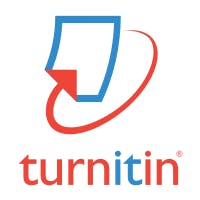As an educator, Jared Cotton has worn nearly as many hats as Dr. Seuss’s Bartholomew Cubbins—elementary math and science teacher, assistant principal, principal, district director of assessment and accountability, assistant superintendent, superintendent. There is little in his CV to suggest someone who might also be a begrudging admirer of Canadian pop singer Justin Bieber.
But there is something.
Early in his career, Cotton was a district technology specialist and developed an appreciation for anyone who could wield emerging technologies in exciting new ways. Now the superintendent of Henry County (Virginia) Public Schools, Cotton is himself looking for new ways to leverage technology to teach his students. In that vein, he is also impressed with how Bieber used the Internet to find a following as a homemade YouTube sensation.
“We talk all the time about Justin Bieber,” Cotton says, “and how the whole world had a chance to see him long before he was famous. Because of technology, he was able to share his talent with so much more of an audience, well beyond his school or his community.”
Cotton has committed his own community to making sure its students learn how to write effectively; here too technology plays a role.
Find more readers for your students
The effort begins in his district’s preschools—with rubrics, writing prompts, and oodles of creative spelling. But it really kicks in during middle school.
“What we find in our middle schools is that students are starting to develop their own voices as writers,” Cotton says. “They’re starting to analyze the craft of writing and they’re reading like writers and deconstructing models of good writing.”
At their age, Cotton remembers, he was writing for an audience of one: his teacher. Today, in what Cotton calls a game-changer for middle school students, technology allows them to write for a potentially sprawling (if not quite Bieberesque) audience.
“We encourage students to write on blogs and post their writing where others can read it and comment on it,” Cotton says. “What’s interesting to me is that students are more concerned about their writing being effective and well done, knowing their peers or people outside their school are going to read it versus just the teacher.”
Which isn’t to say that the readership of educators has been entirely forgotten. Henry County students in grades six through nine participate in district-wide writing prompts three times a year. These prepare them for the state writing exams in eighth and tenth grades and help teachers across the district calibrate their scoring and expectations.
The district’s intense focus on writing instruction, however, isn’t all about acing state exams. It’s also about readying students for college, careers, and engaged citizenship.
Give students journals, and a chance to fill them
Content, Cotton acknowledges, is the fuel for the information economy. It is possible that Americans write more today than they ever have—emails, tweets, text messages, blog posts, memos, position papers. And yet there seems to be common agreement and plenty of evidence that we don’t write particularly well.
To rectify that, Cotton believes schools need to incorporate writing instruction into every content area.
“I taught fifth-grade mathematics and I had my students write in a journal,” he says. “When you only look at how a student works a problem, you have no idea where their misunderstanding was, where they faltered. The writing helps.”
So perhaps it comes as no surprise that students in Cotton’s district are writing in journals in all grades in all subject areas.
Cotton feels the benefits of bringing writing into, say, the math class actually flow in both directions.“We feel that writing and math really complement each other,” he says. “Anecdotally, when students are strong at writing, they tend to be strong in math as well. There’s a high correlation between academic achievement, we’ve found, and nonfiction writing.”
Make everyone a writing instructor
To support the journaling going on in every class, Cotton’s district has invested heavily in professional development to help all teachers—whether their subject is English or phys ed—become effective writing teachers.
“We’ve had to send a strong message that everyone has a role in teaching reading and writing,” Cotton says. “Along with that, you have to provide support because a math teacher or a P.E. teacher may say, ‘I’m not sure this is good writing’ or ‘I’m not sure how to score this writing.’ We provide training so they all have a good sense of how to evaluate writing and provide feedback to students.”
And useful feedback is crucial. There’s no place for Awkward or Unclear or Ugh!!! “We’ve had to work,” Cotton says, “on helping our teachers provide students with actionable, growth-producing feedback they can actually do something with.”
Cotton says that clear, specific feedback takes time, “especially when you’re a high school teacher and you have three classes of close to 30 students each and you’re talking about 90 papers, at least, that you’re providing feedback for.”
Exploit the technology
So Cotton, the former tech specialist, is introducing Revision Assistant, an automated feedback tool, to his district this year. The program gives instant feedback in a manageable mix of positive encouragement and constructive suggestions. “Several teachers who have seen the tool said, ‘We want to give it a try,’” Cotton says, “because they saw its ability to give students lots of feedback very quickly. Students could go through several drafts before they ever produce a draft they turn into the teacher.”
Henry County schools have high-speed broadband access and provide iPads to every student in grades three through nine. Not surprisingly then, the district belongs to the League of Innovative Schools and was honored earlier this year by the California-based Center for Digital Education.
A robust, district-wide writing initiative requires an enormous investment. And Cotton will be the first to tell you that his district has been particularly blessed. When Memorial Hospital in Martinsville was sold in 2002, the proceeds went into a charitable trust called the Harvest Foundation, which underwrites local health, welfare, and educational programs, including most of his schools’ professional development expenses.
Yet his district’s largest investment in writing instruction is time—for professional development, for calibrating scoring, for providing actionable feedback. Students must make the time to practice and to peer-review each others' work.
Cotton tries to ensure that all the would-be poet laureates, Nobel novelists, and Broadway bards in Henry County get the chances they need to write frequently. He is well aware that even Baby Biebs, singing his early covers of Chris Brown and Usher, needed practice to find his voice.
Writing Resources for Teachers
As they work to make sure every student in their district becomes an effective writer, Jared Cotton and his colleagues at Henry County Public Schools have loaded their tool belts with the following:
- The Daily Cafe
- Writing Pathways: Performance Assessments and Learning Progressions, Grades K–8, by Lucy Calkins
- Adolescent Literacy: Turning Promise into Practice, edited by Kylene Beers, Robert E. Probst, and Linda Rief
- New Tech Network
- Revision Assistant
- IXL.com for writing, grammar, and composition



